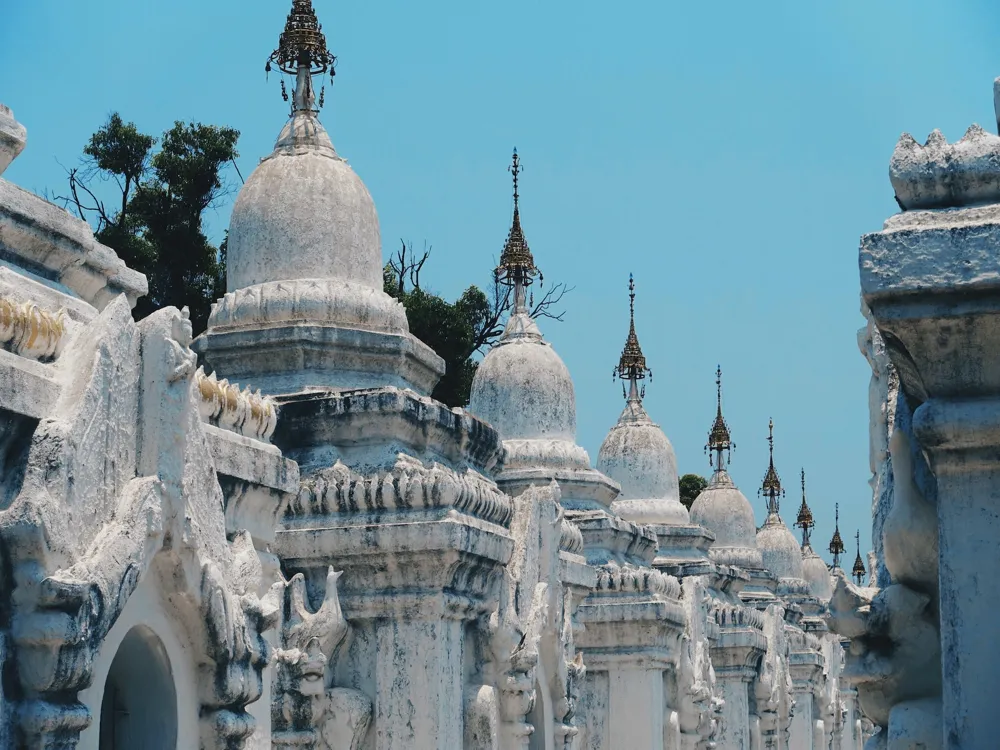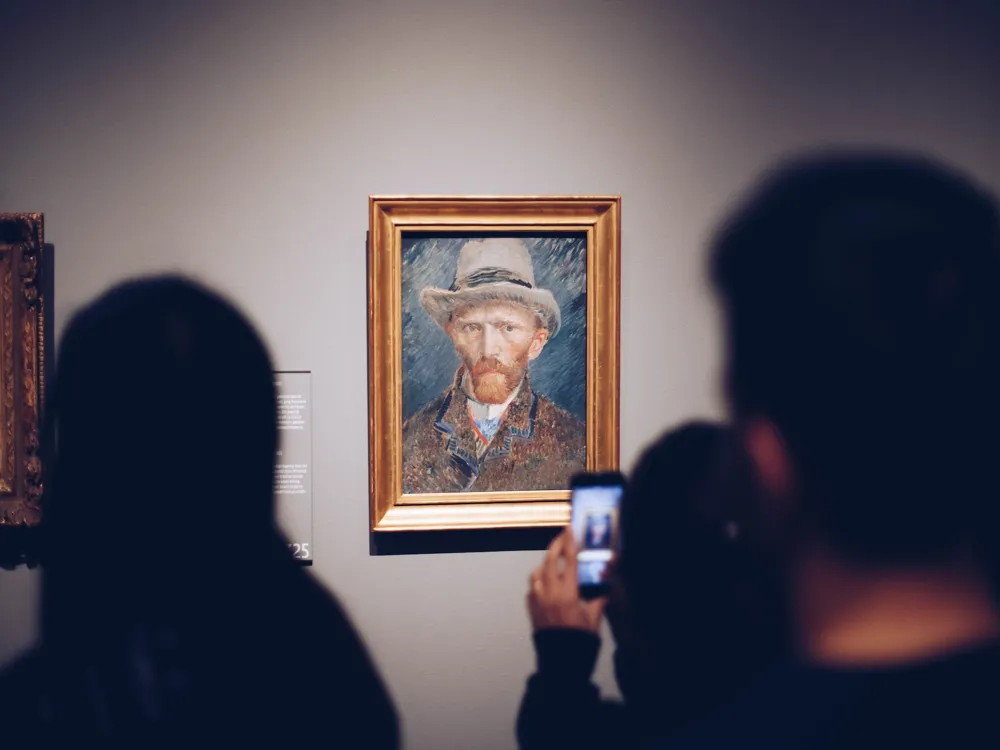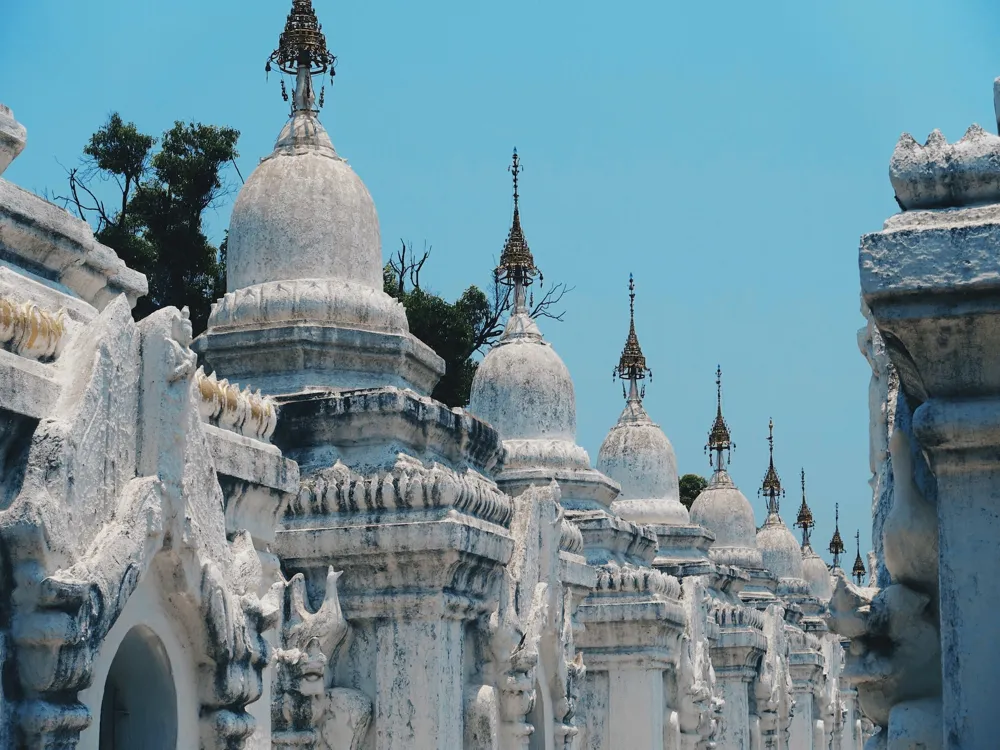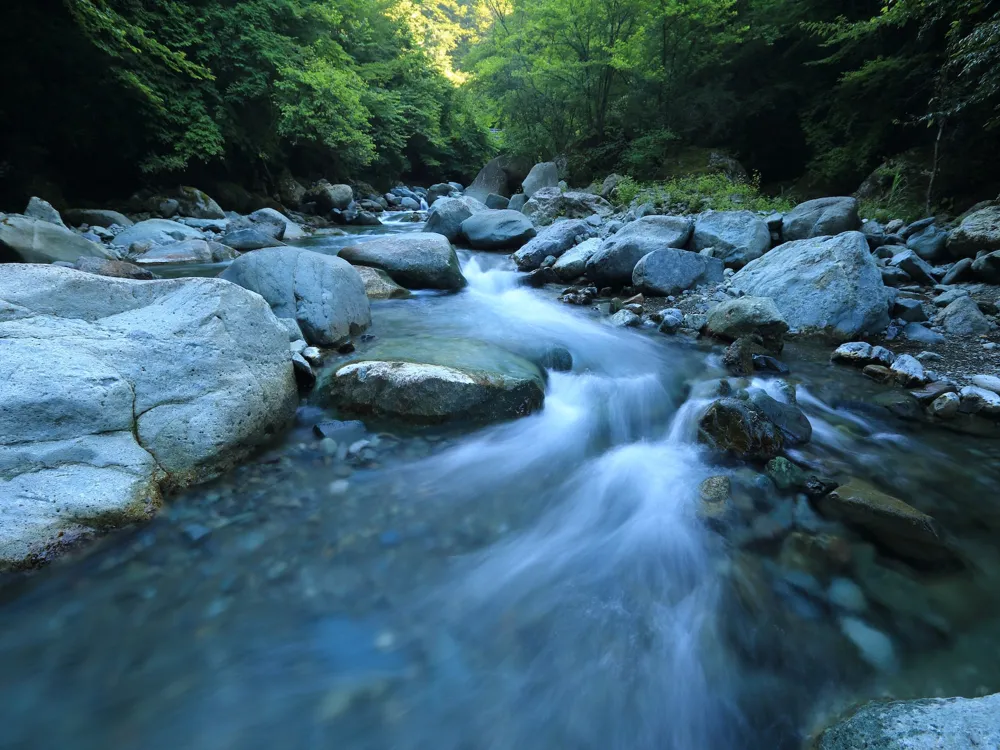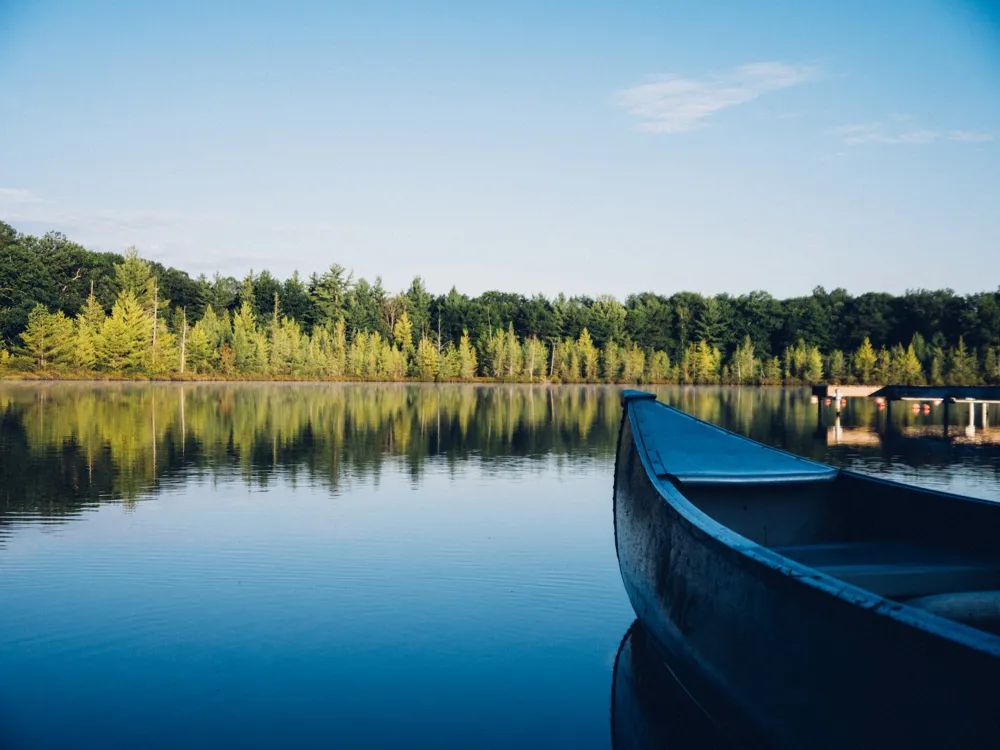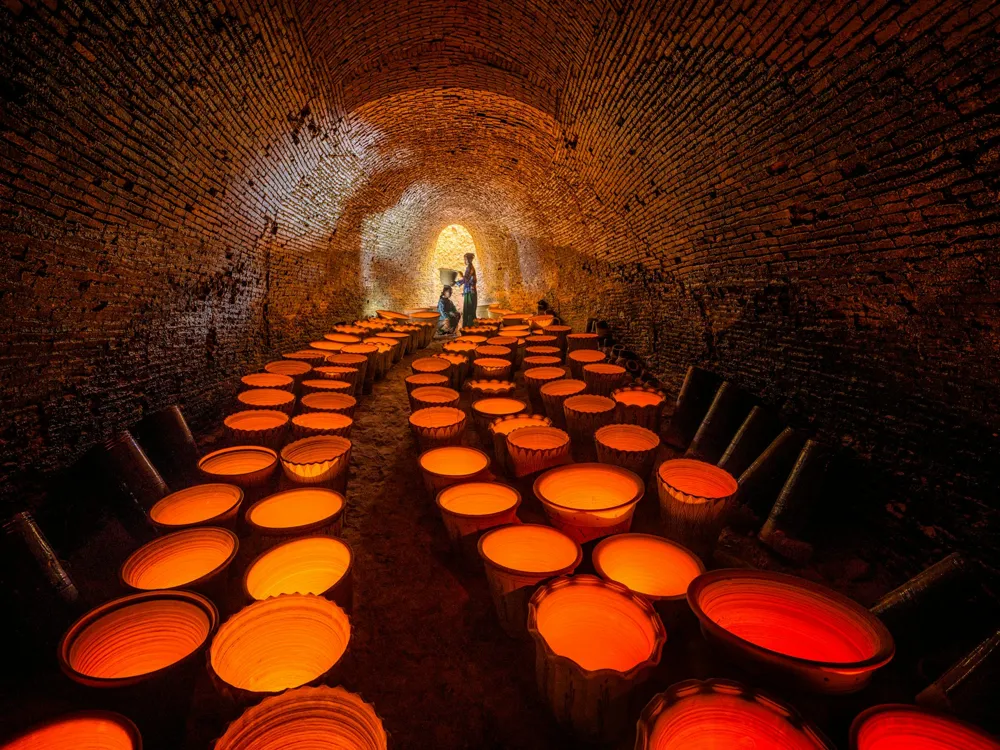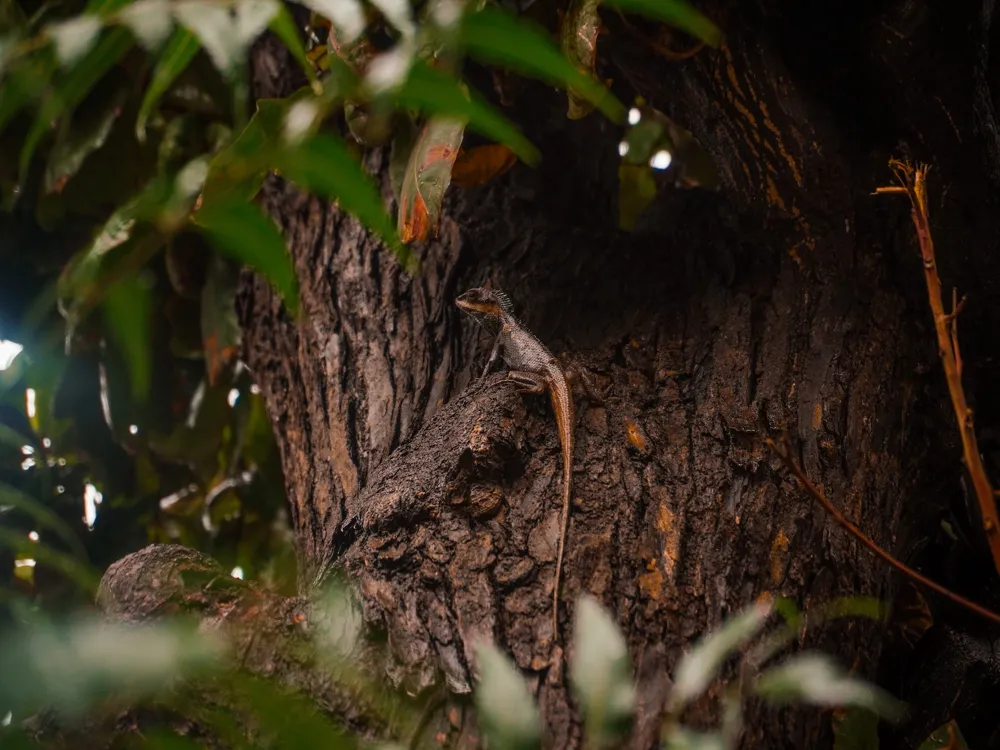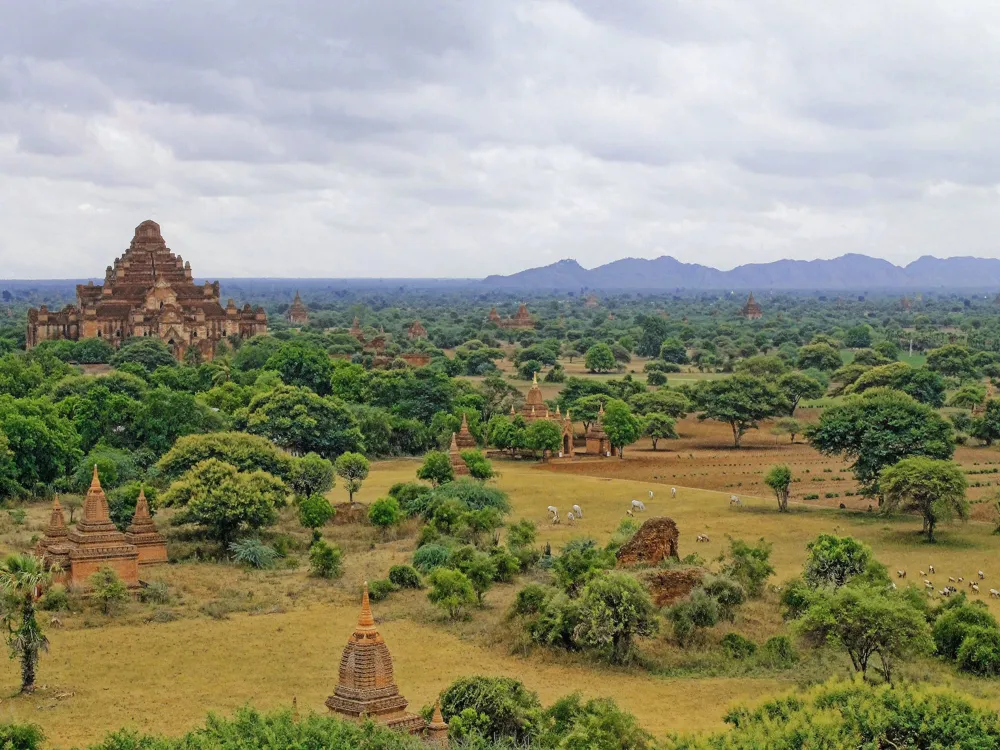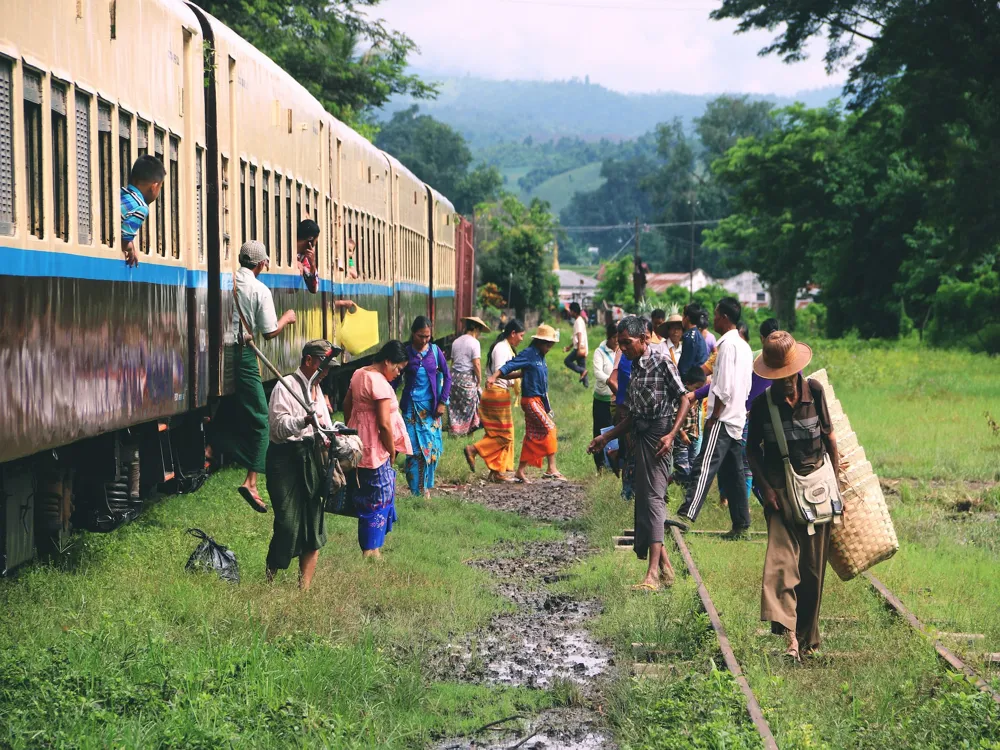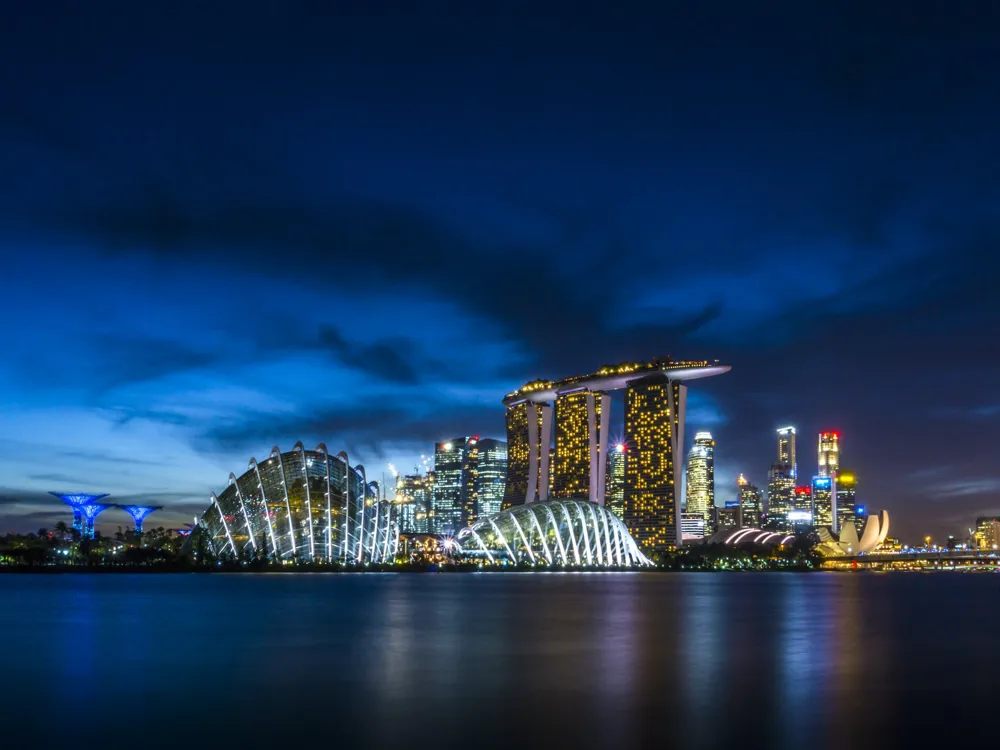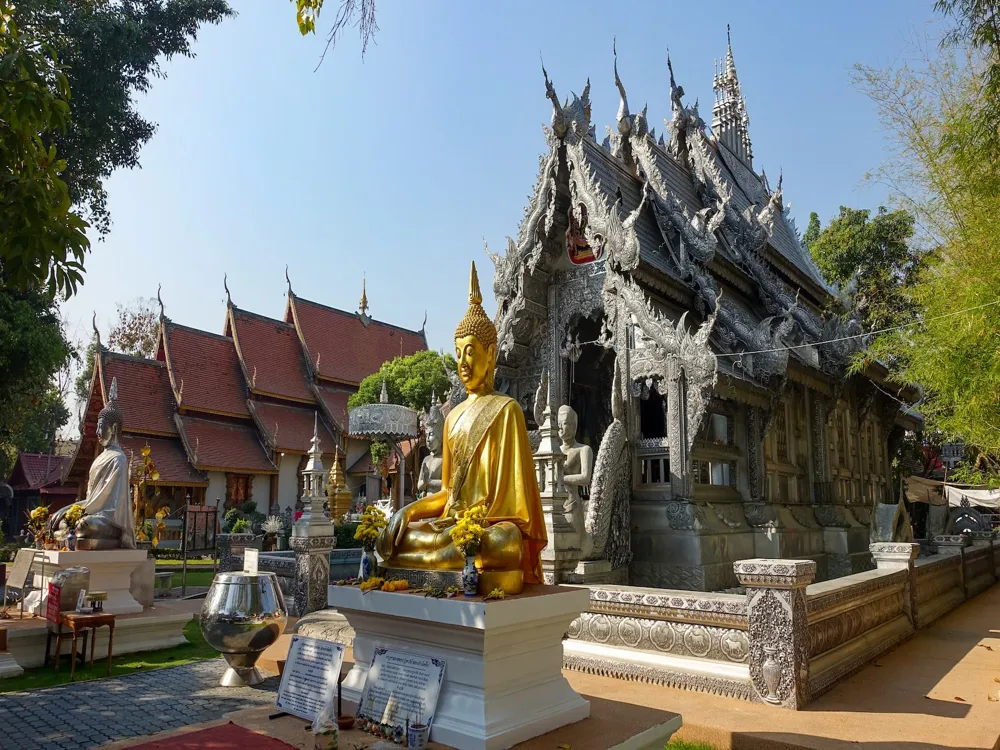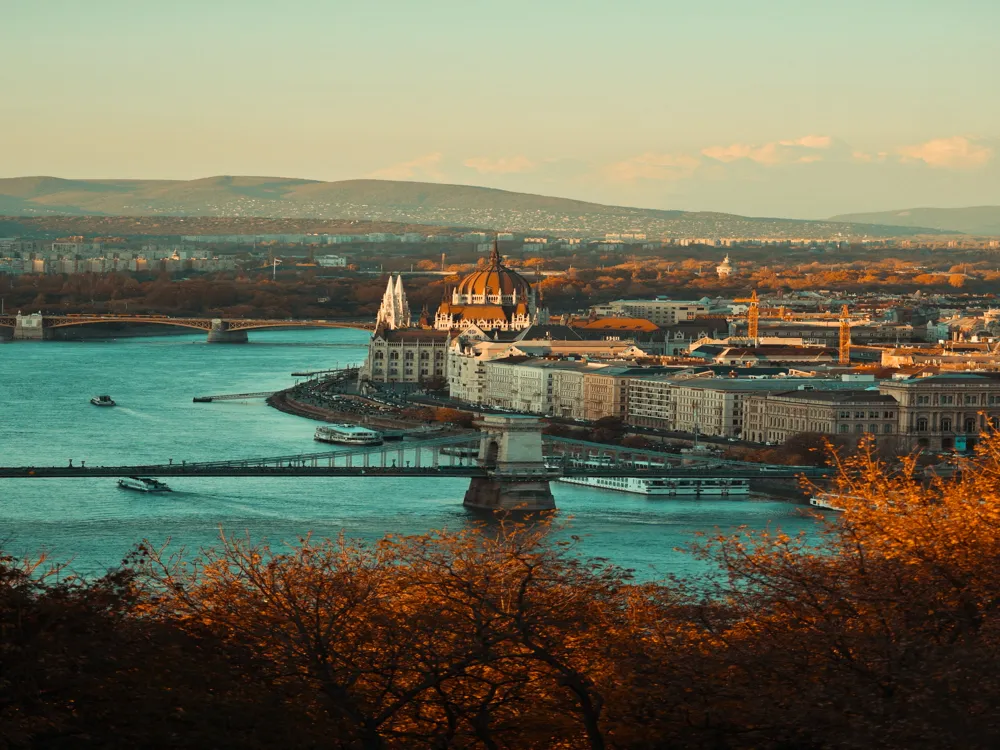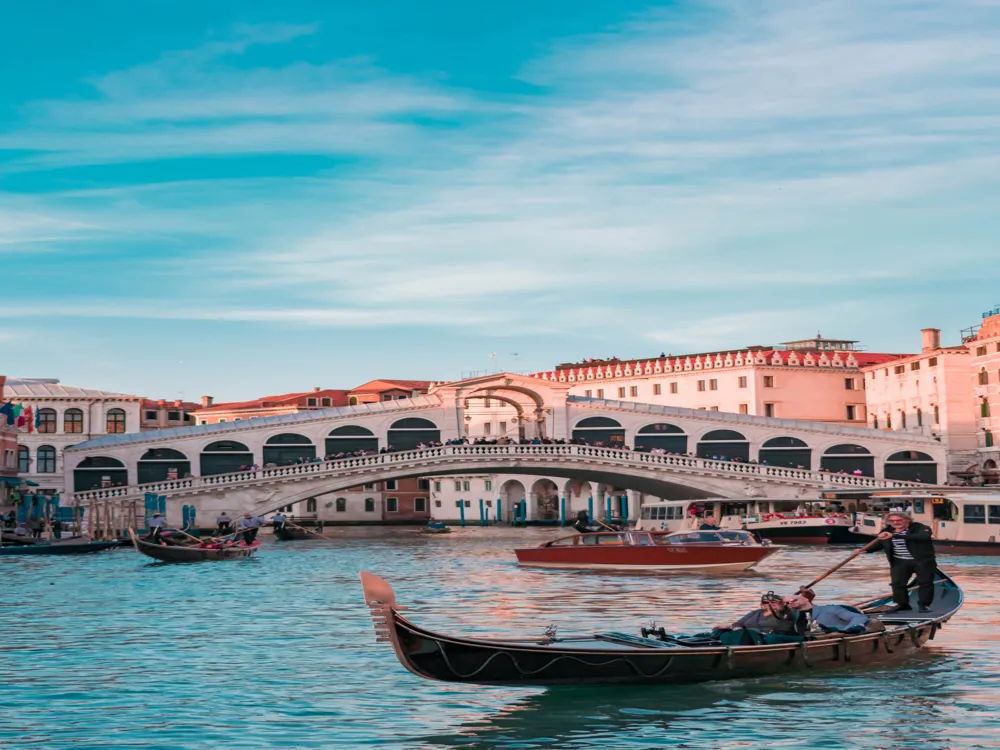The Mahamuni Paya, located in the cultural heart of Mandalay, Myanmar, is not just a temple but a symbol of Burmese spirituality and artistry. This revered site, also known as the Mahamuni Buddha Temple, is home to one of Myanmar's most sacred Buddha images, the Mahamuni Buddha. The origins of Mahamuni Paya date back to the 1st century AD, making it a historical as well as a religious landmark. According to legend, the Buddha visited Dhanyawadi, an ancient Arakan city, where the Mahamuni Buddha image was crafted in his likeness. Over centuries, the image was moved several times, finally finding its home in Mandalay in the late 18th century, under the orders of King Bodawpaya. The Mahamuni image, standing at around 12 feet tall, is a living testament to the devotion of the Buddhist community. Over the years, male devotees have applied gold leaf to the statue, which has led to an uneven surface with some areas covered in a thick layer of gold. This practice has given the statue a unique appearance, symbolizing the evolving nature of faith and devotion. The temple complex itself is a hive of activity, with pilgrims, monks, and tourists all coming to pay their respects, meditate, or simply marvel at the beauty of the site. The Mahamuni Paya is not just a static monument; it is a dynamic and living part of Burmese Buddhist culture. The importance of Mahamuni Paya in Burmese culture cannot be overstated. It is the center of major festivals, most notably the Mahamuni Pagoda Festival in February, which attracts thousands of pilgrims from across the country. The temple's deep cultural significance is also evident in its influence on local arts and crafts, with many workshops in the surrounding area dedicated to bronze casting, gold leaf beating, and marble carving, all crafts associated with the temple. In essence, the Mahamuni Paya is a cornerstone of both the spiritual and cultural identity of Myanmar. The architectural splendor of Mahamuni Paya is a reflection of the rich cultural heritage of Myanmar. The temple's design is a stunning example of traditional Burmese religious architecture, characterized by its intricate wood carvings, ornate stucco work, and multi-tiered roofs. The main shrine housing the Mahamuni Buddha image is an architectural marvel. The exterior of the shrine is decorated with intricate carvings depicting scenes from the Jataka tales, the stories of the Buddha's previous lives, which are a significant element in Theravada Buddhist tradition. One of the most distinctive features of Mahamuni Paya is its use of gold and precious stones. The interior of the main shrine, where the Mahamuni Buddha image is housed, glitters with gold. The walls and ceilings are adorned with intricate patterns of gold leaf and glass mosaics, creating a dazzling effect. The use of gold is not just decorative but also symbolic, representing the purity and sacred nature of the site. Another noteworthy feature is the series of surrounding pavilions, each an example of traditional Burmese craftsmanship. These pavilions house various artifacts, including ancient statues and royal regalia, adding to the historical richness of the temple. The layout of the temple complex is also significant, with the main shrine at the center surrounded by a series of smaller shrines and meditation halls. This layout is designed to facilitate the flow of pilgrims and worshippers, allowing them to engage in various religious practices such as meditation, prayer, and the veneration of other significant Buddhist images within the complex. The integration of nature into the temple's architecture is also evident, with several gardens and courtyards providing tranquil spaces for reflection and meditation. Visitors should dress modestly, covering shoulders and knees, as a sign of respect in this sacred place. Be mindful of local customs, such as removing shoes before entering the temple and not pointing feet towards the Buddha images. While photography is allowed, it should be done respectfully and without disturbing others. Flash photography is usually prohibited inside the shrine. Visiting early in the morning can provide a more peaceful experience, avoiding the crowds and the heat of the day. Visitors can participate in local rituals like offering gold leaf to the Buddha, but it should be done respectfully and following the guidance of temple staff. Mahamuni Paya is easily accessible from various parts of Mandalay. The most common modes of transportation include taxis, which are readily available throughout the city. For a more local experience, visitors can opt for a trishaw ride. Those staying in central Mandalay can also reach the temple by a short drive, and parking is available nearby. For international visitors, the nearest airport is Mandalay International Airport, from which one can hire a taxi or arrange a hotel shuttle to reach Mahamuni Paya. Public buses also run to the temple, offering an affordable option for travelers. Read moreOverview of Mahamuni Paya in Mandalay
The architecture of Mahamuni Paya
Tips for Visiting Mahamuni Paya
Dress Appropriately
Respect the Customs
Photography Etiquette
Best Time to Visit
Participate in Rituals
How To Reach Mahamuni Paya
Mandalay Tourism
Best Time to Visit Mandalay
How to Reach Mandalay
Things To Do Mandalay
Mahamuni Paya
Mandalay
NaN onwards
View mandalay Packages
Weather :
Tags : Buddhist Temple
Opening hours : 8:00 AM - 5:00 PM
Ticket details : MMK 5000
Planning a Trip? Ask Your Question
Mandalay Travel Packages
View All Packages For Mandalay
Top Hotel Collections for Mandalay

Private Pool

Luxury Hotels

5-Star Hotels

Pet Friendly
Top Hotels Near Mandalay
Other Top Ranking Places In Mandalay
View All Places To Visit In mandalay
View mandalay Packages
Weather :
Tags : Buddhist Temple
Opening hours : 8:00 AM - 5:00 PM
Ticket details : MMK 5000
Planning a Trip? Ask Your Question
Mandalay Travel Packages
View All Packages For Mandalay
Top Hotel Collections for Mandalay

Private Pool

Luxury Hotels

5-Star Hotels

Pet Friendly







